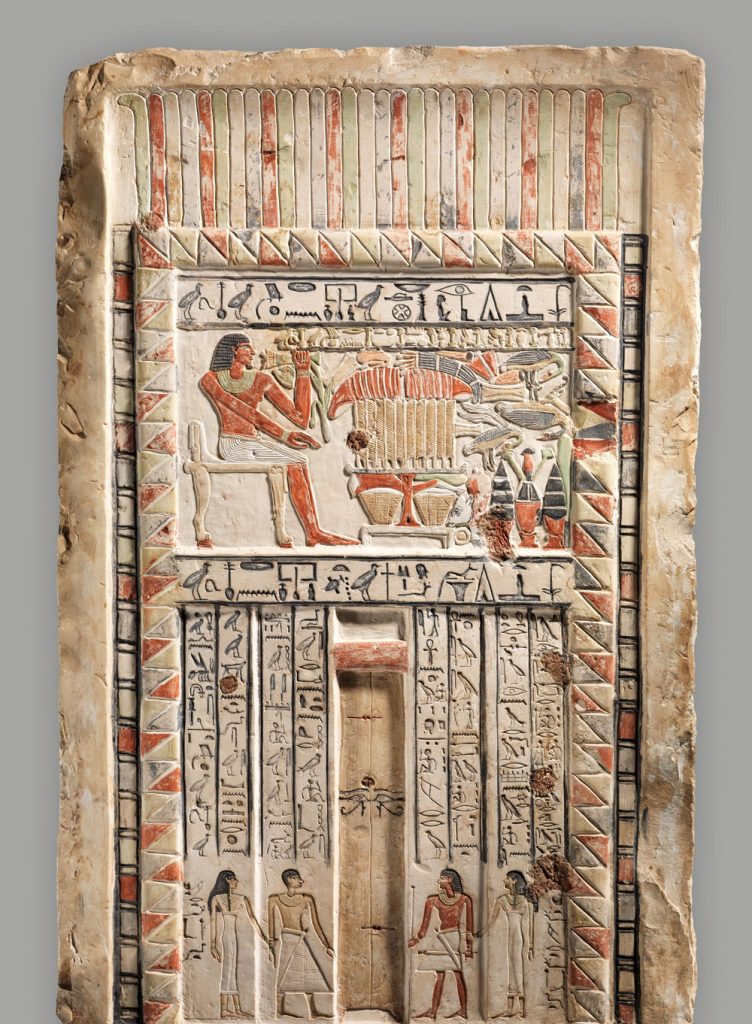Egyptian Funerary Portrait
False Door

False Door of the Royal Sealer Neferiu, Old Kingdom–First Intermediate Period, Dynasty 8–11, ca. 2150–2010 B.C. From Egypt; Probably from Northern Upper Egypt, Dendera area.Limestone, paint, H. 115.5 cm (45 1/2 in); W. 67.3 cm (26 1/2 in); Th. 12.6 cm (4 15/16 in.) Metropolitan Museum of Art, Gift of J. Pierpont Morgan, 1912, 12.183.8. Image Courtesy of Metropolitan Museum of Art, www.metmuseum.org.
Another form of funerary art is called the “false door.” The false door acted as a gateway between the living world and the afterlife. It would be placed in the tomb for when the person would awake again to pass through to their next stage of life. The false door was seen almost as a spiritual necessity in ancient Egypt. Although we are not certain if this specific funerary portrait was placed in a tomb with a false door, the two forms of funerary art often coexisted.
